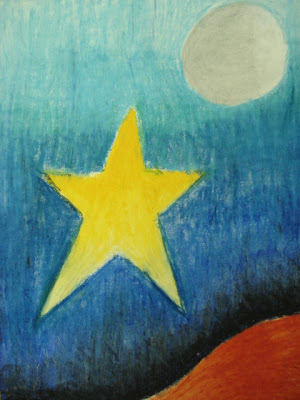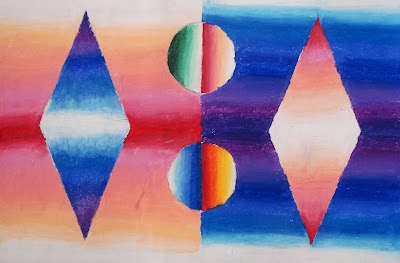This is a bas relief (or low relief) project that uses recycled cereal boxes. A bas relief is a low sculpture technique in which the design elements are just barely more prominent than the (overall flat) background.
For this project, Grade 9 students build up the relief with layers of cut-out cereal box shapes. They had to represent something they are thankful for.
I found the lesson plan on the fantsastic CRIZMAC website.
from Wikipedia:
Milagros are religious folk charms that are traditionally used for healing purposes and as votive offerings in Mexico, the southern United States, other areas of Latin America, as well as parts of the Iberian peninsula. They are frequently attached to altars, shrines, and sacred objects found in places of worship, and they are often purchased in churches, cathedrals or from street vendors.
Milagros come in a variety of shapes and dimensions and are fabricated from many different materials, depending on local customs. For example, they might be nearly flat or fully three dimensional; and they can be constructed from gold, silver, tin, lead, wood, bone, or wax. In Spanish, the word milagro literally means miracle or surprise.
This is what you'll need:
- Sketchbooks or scrap paper
- Scissors
- Pencils
- Lightweight cardboard (we used cereal boxes)
- Cardboard squares to use as the base for the milagro (we used mat board scraps which were donated from a framing shop)
- White glue, paintbrushes
- Black tissue paper (can usually find at the Dollar store)
- Metallic crayons
I do this project towards the end of a term when I've had enough time to build up my cereal box collection- of course, you can always ask students to bring them in as well.
Metallic wax crayons or oil pastels. Take the labels off.
So students begin by sketching a simple design for their milagro in their sketchbook. They needed to represent somehting they were thankful for. They had to have a minimum of three layers and they could include a word (in any language) if they wished. I got the usual suspects of video games, but for the most part, I did get some more meaningful symbols such as love, friendship, mothers, music, etc.
Then students use a piece of mat board for the base and then start drawing and cutting out the shapes needed from the cereal boxes. Think in terms of layers. Lay it all out and decide how you want the composition to look.
When you're happy with it, glue all the pieces down with an even, thin layer of white glue.
Let dry (overnight) and you will have something like this:
Then mix up some white glue with a bit of water to thin it down, and using a paint brush, brush over the relief and then gently and carefully lay a sheet of black tissue paper (cut slightly larger than the relief) over the relief and pat it down with your fingers and/or a paintbrush. Rub around all the shapes. It's ok if you get lots of wrinkles.
Wrap it around the back like a present (see below) and glue it into place. Let dry.
I stacked books on top of them overnight as they had a tendency to warp a bit....
When they are dry, rub the side of a metallic wax crayon all over the design
and it will pop out and look like old metal.
Here are some Grade 9 results:
Ta da!
 |
| detail of the bas relief |
 |
| "Love" in German |
 |
| "Rain" |































































